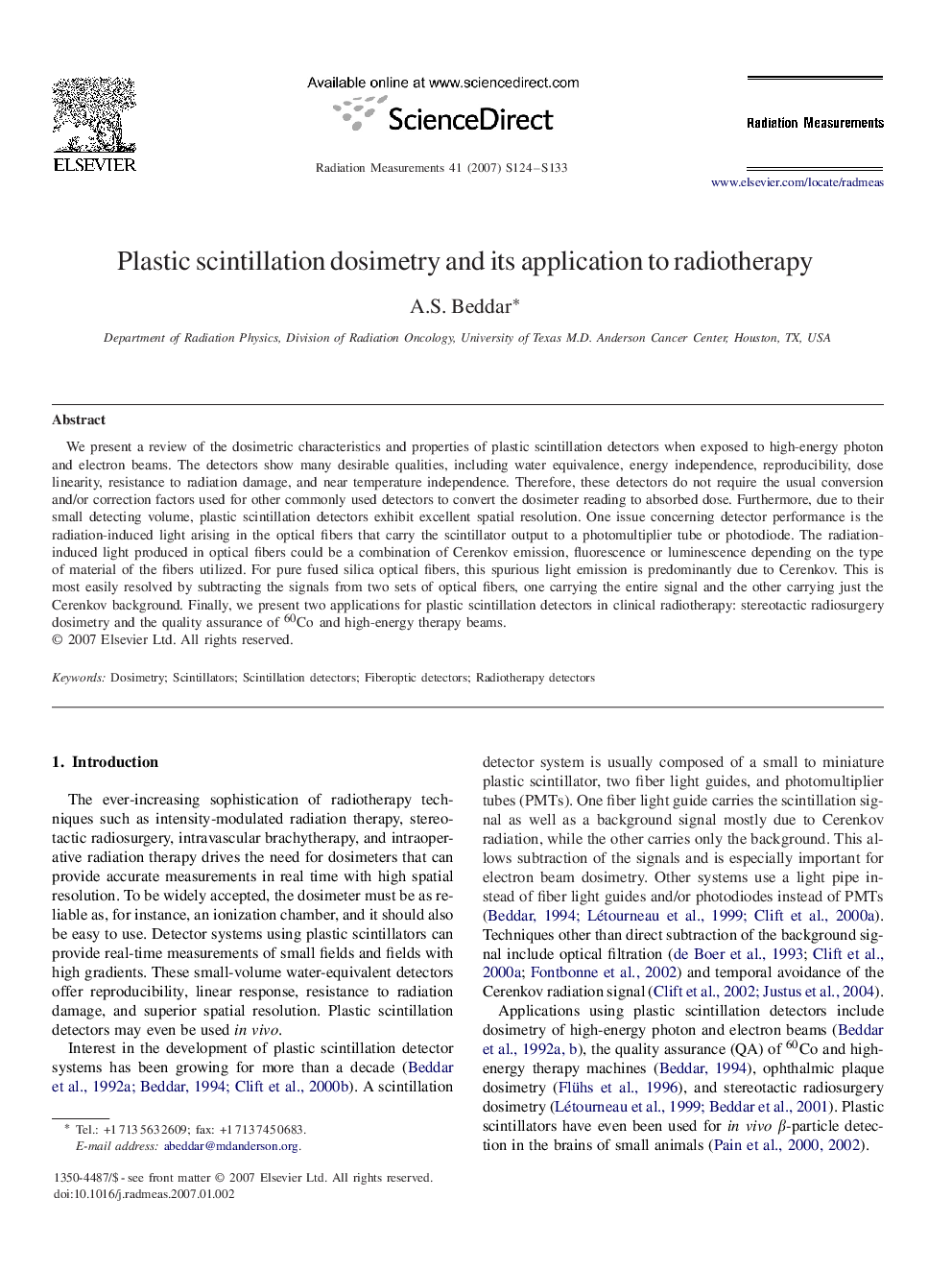| Article ID | Journal | Published Year | Pages | File Type |
|---|---|---|---|---|
| 1885670 | Radiation Measurements | 2006 | 10 Pages |
We present a review of the dosimetric characteristics and properties of plastic scintillation detectors when exposed to high-energy photon and electron beams. The detectors show many desirable qualities, including water equivalence, energy independence, reproducibility, dose linearity, resistance to radiation damage, and near temperature independence. Therefore, these detectors do not require the usual conversion and/or correction factors used for other commonly used detectors to convert the dosimeter reading to absorbed dose. Furthermore, due to their small detecting volume, plastic scintillation detectors exhibit excellent spatial resolution. One issue concerning detector performance is the radiation-induced light arising in the optical fibers that carry the scintillator output to a photomultiplier tube or photodiode. The radiation-induced light produced in optical fibers could be a combination of Cerenkov emission, fluorescence or luminescence depending on the type of material of the fibers utilized. For pure fused silica optical fibers, this spurious light emission is predominantly due to Cerenkov. This is most easily resolved by subtracting the signals from two sets of optical fibers, one carrying the entire signal and the other carrying just the Cerenkov background. Finally, we present two applications for plastic scintillation detectors in clinical radiotherapy: stereotactic radiosurgery dosimetry and the quality assurance of Co60 and high-energy therapy beams.
